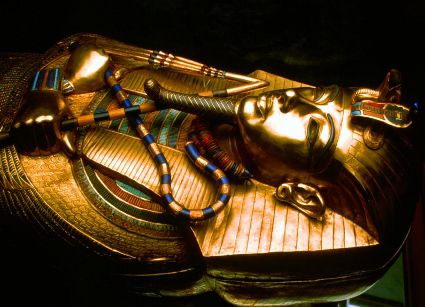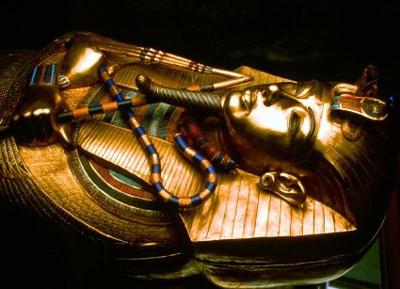The Discovery of King Tut Exhibit in Balboa - Now through April 26, 2015 at The Natural History Museum, Balboa San Diego
In 1922, British archeologist Howard Carter made a fascinating discovery that many would consider unsurpassed, even today. After years of searching, Carter discovered the tomb and remains of what is now ancient Egypt’s most famous ruler—Tutankhamun, better known as the legendary King Tut.
What made Carter’s find so extraordinary was the vast collection of artifacts discovered inside the tomb and the remarkable condition they were in. This, in fact, is what made King Tut something of a legend in the modern world. The young pharaoh, who rose to power at age 9 and then died under mysterious circumstances a mere 10 years later, would be otherwise insignificant in the long history of kings in the ancient world.
But inside Tutankhamun’s tomb rested hundreds of priceless statues, carvings and shrines; chariots and thrones cast in solid gold; and a fortune in fine jewelry, precious metals and stones. At the heart of the tomb, preserved within a stone sarcophagus and three separate coffins (the third and final coffin made of pure gold) lay the mummified remains of the young King Tut. And it’s this fascinating collection of artifacts that makes Tutankhamun’s tomb one of the greatest finds in history.

King Tut's Treasure at Balboa Park
The actual remains of Tutankhamun and all his treasure are being safely held at the Egyptian National Museum in Cairo, no longer touring the world because of their fragile condition. But a team of talented exhibition designers has spent more than five years creating exact replicas of the tomb and its contents, including the remains of Tutankhamun himself.
Now, for the first time at the Natural History Museum in Balboa Park (the NAT), the tomb of King Tut can be witnessed, studied, explored and admired by all—in the exact state it was in when discovered by Carter and his devoted team. Catch the exhibit now through April 26, 2015.
The Discovery of King Tut is a fascinating, one-of-a-kind exhibit you don’t want to miss. See the tomb and treasures of the world famous king through the eyes of the founding archeologists, an experience that would be otherwise impossible due to the location and fragile state of the original pieces.

King Tut's Artifacts - NAT San Diego
Over 1,000 beautifully crafted replicas—virtually indistinguishable from the originals—are being displayed in the exact way they were discovered, providing a unique experience shared by a very small and privileged group. In some cases, artifacts were piled up haphazardly inside the tomb; and elsewhere, the king’s treasure was carefully arranged and presented in the most honorable fashion, such as with the burial chamber where Tutankhamun was eternally laid to rest.
This amazing exhibit allows you to see inside the majestic tomb, with all it’s treasure, just the way it was discovered in 1922—and it comes with a fascinating history lesson. But it’s only being held through April 26, so don’t waste time! Once the exhibit leaves town, there’s no telling if it will ever return.

King Tut's Golden Shrine at Balboa Park
You can learn more about the NAT’s Discovery of King Tut exhibit and purchase tickets through their website at www.sdnhm.org, or by calling (619) 232-3821. The NAT is located in Balboa Park at 1788 El Parado, San Diego, CA 92101. Now open through April 26, 2015






(0) comments
We welcome your comments
Log In
Post a comment as Guest
Keep it Clean. Please avoid obscene, vulgar, lewd, racist or sexually-oriented language.
PLEASE TURN OFF YOUR CAPS LOCK.
Don't Threaten. Threats of harming another person will not be tolerated.
Be Truthful. Don't knowingly lie about anyone or anything.
Be Nice. No racism, sexism or any sort of -ism that is degrading to another person.
Be Proactive. Use the 'Report' link on each comment to let us know of abusive posts.
Share with Us. We'd love to hear eyewitness accounts, the history behind an article.